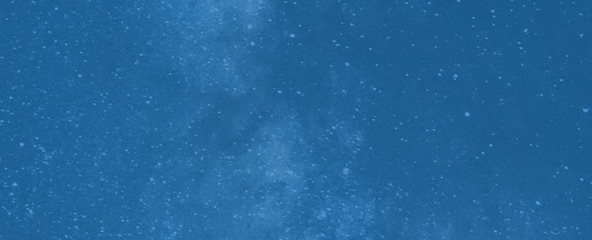
Lisa Grossman is the astronomy writer for Science News. Previously she was a news editor at New Scientist, where she ran the physical sciences section of the magazine for three years. Before that, she spent three years at New Scientist as a reporter, covering space, physics and astronomy. She has a degree in astronomy from Cornell University and a graduate certificate in science writing from UC Santa Cruz. Lisa was a finalist for the AGU David Perlman Award for Excellence in Science Journalism, and received the Institute of Physics/Science and Technology Facilities Council physics writing award and the AAS Solar Physics Division Popular Writing Award. She interned at Science News in 2009-2010.

Trustworthy journalism comes at a price.
Scientists and journalists share a core belief in questioning, observing and verifying to reach the truth. Science News reports on crucial research and discovery across science disciplines. We need your financial support to make it happen – every contribution makes a difference.
All Stories by Lisa Grossman
-
 Astronomy
AstronomyPart of a lost, ancient star catalog has now been found
Greek astronomer Hipparchus may be the first to try to precisely map the stars. His lost work turned up on parchment that had been erased and reused.
-
 Astronomy
AstronomyAstronomers have found the closest known black hole to Earth
Discovered by how it pushes around a companion star, the black hole is about 1,500 light-years away and roughly 10 times the mass of the sun.
-
 Astronomy
AstronomyMeet the BOAT, the brightest gamma-ray burst of all time
Probably triggered by a supernova in a remote galaxy, the burst detected on October 9 could challenge theories about these brilliant blasts.
-
 Astronomy
AstronomyA 3-D model of the Cat’s Eye nebula shows rings sculpted by jets
The Cat’s Eye is one of the most complex nebulae known. A 3-D reconstruction reveals the source of some of that complexity.
-
 Planetary Science
Planetary ScienceNASA’s DART mission successfully shoved an asteroid
Data obtained since the spacecraft intentionally crashed into an asteroid show that the impact altered the space rock’s orbit even more than intended.
-
 Astronomy
AstronomyThe James Webb Space Telescope spied the earliest born stars yet seen
The stars, found in the first released science image from the James Webb Space Telescope, probably winked into existence about 13 billion years ago.
-
 Planetary Science
Planetary ScienceSaturn’s rings and tilt might have come from one missing moon
The hypothetical moon, dubbed Chrysalis, could have helped tip the planet over before getting shredded to form the rings, researchers suggest.
-
 Astronomy
AstronomyHere’s the James Webb telescope’s first direct image of an exoplanet
Along with spying its first exoplanet, the James Webb telescope got its first direct spectrum of an object orbiting a star in another solar system.
-
 Space
Space‘The Milky Way’ wants you to get to know your home in the universe
In a new ‘autobiography,’ the Milky Way tells its own story with the help of astrophysicist Moiya McTier.
-
 Astronomy
AstronomyThe James Webb telescope spotted CO2 in an exoplanet’s atmosphere
The first definitive detection of the gas on a world in another solar system paves the way for detections in planets that are more Earthlike.
-
 Space
SpaceNASA’s Artemis I mission sets the stage for our return to the moon
The launch will test many aspects of the rocket, capsule and spacesuits that will take astronauts back to the moon.
-
 Planetary Science
Planetary ScienceOort cloud comets may spin themselves to death
How icy objects from the solar system’s fringe break up as they near the sun is a long-standing mystery. One astronomer now thinks he has an answer.